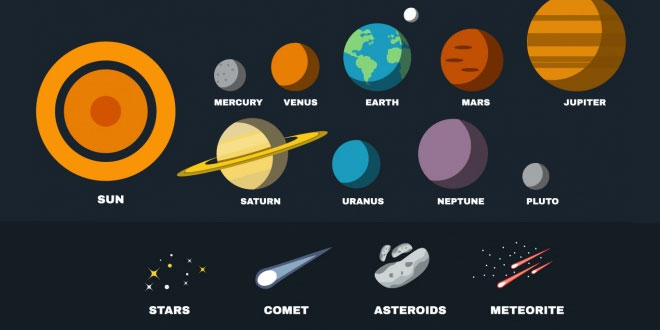Question: Why do the planets do not twinkle at night?
Answer: Planets do not twinkle at night because they do not have their own light and heat.
Question: What is the significance of the sun in the solar system?
Answer: The significance of the sun are:
- The sun is the largest member in the solar system and is located in the middle.
- The sun is the main source of heat and light to all forms of heat and light.
- The gravitational pull of the sun keeps all the planets in the solar system together.
Question: How is the unique planet in the solar system?
Answer: Earth is a unique planet because –
- The best location, with the reference to sun.
- Favorable climatic conditions in the oceans.
- Presence of adequate water.
- Presence of atmosphere.
Question: Write at least one characteristic of each planet in the solar system.
Answer: The planets are:
- Mercury: It is named after the messenger of the roman gods. It is smallest planet in the solar system.
- Venus: It is named after the roman god of love and beauty. It is also known as ‘earth’s twin’.
- Earth: It is the third planet from the sun. It is the fifth largest planet in the solar system.
- Mars: It is named after roman god of war. It is called the ‘Red planet’.
- Jupiter: It is named after the ruler of the roman gods. It is the largest planet in the solar system.
- Saturn: It is named after the father of Jupiter. It is the most beautiful planet in the solar system.
- Uranus: It is named after roman god of sky. It has 21 known moons.
- Neptune: It is named after the roman god of the sea. It has 8 known moons.
Question: Write short notes Nebula, Meteors, Comets, Saptarishi.
Answer:
- Nebula: The stars are formed from clouds of gas and the dust in space is called Nebula. It can be visible, if the stars are near or in it.
- Meteors: They are small pieces of rocks revolving around the sun. Most of them burn up and become gases. When they hit the surface of the earth, they are called Meteorites.
- Comets: Comets are a huge lumps of snow and rocky dust. The most famous comets is Halley’s comets.
- Saptarishi: A group of seven stars. We can locate the pole star with the help of saptarishi.
 Class Notes NCERT Solutions for CBSE Students
Class Notes NCERT Solutions for CBSE Students



It helped me a lot!